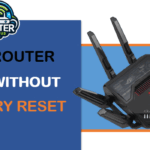Introduction The WireGuard protocol, which utilizes a fast, easy to use, secure VPN technology, has quickly become very popular as one of the founding members at both the Cloudflare initiative and is a trend catching on with many individuals globally. As more users seek to implement WireGuard in their home and business networks, a common question arises: How good are ASUS … [Read more...] about Which ASUS Router Support WireGuard? A Comprehensive Guide
Asus ZenWifi
ASUS Router Login Without factory Reset
Introduction To manage your home network, change settings, and so on, this job is absolutely an important one. Though many users will forget their login credentials and won’t be able to access the admin panel of their router. By the way the good news is that you will most likely be able to reboot your ASUS router without having to factory reset it. In this ultimate guide, … [Read more...] about ASUS Router Login Without factory Reset
rt-n66u (Powerful dual-band WiFi router delivering fast wireless)
Introduction RT-N66U is an advanced model of Asus that belongs to dual band N66 types and is designed for home and small office uses and has the capability to give fast and reliable internet connectivity. One advantage of this routers is that you can connect to an Asus AiMesh supported router since this is a tri-band router with support for whole-home roaming. As for this … [Read more...] about rt-n66u (Powerful dual-band WiFi router delivering fast wireless)
Asus Rog rapture gt-ac2900 (Router Delivering lag-free WiFi)
A gaming router provides a NAT-like wired connection for online multiplayer games through features like prioritization, bandwidth management, and specific optimizations for gaming traffic. The Asus ROG Rapture GT-AC2900 is one of the most powerful gaming routers in the market providing users with both dual-band 802. typical 11ac WiFi speeds of up to 2. 9Gbps and game-optimized … [Read more...] about Asus Rog rapture gt-ac2900 (Router Delivering lag-free WiFi)
rt-n66u (fast wireless speeds & advanced security features)
Asus RT-N66U is a widely known wireless router that can guarantee fast work and high ergonomics at the same time. Here in this article, you will get to know about the features of this router, the specifications of this router that it has what it can offer, and whether it will be suitable for the requirements of your home or a small office network. This is an Asus … [Read more...] about rt-n66u (fast wireless speeds & advanced security features)




